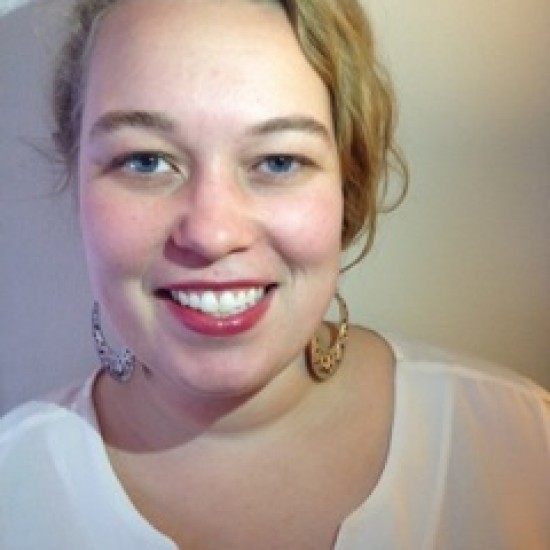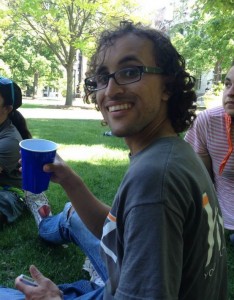It is my job to think about school. Everyday, I read, write, and speak about education. I ask, and often try to answer, the big questions. Like, why do we have schools? Or, what is the purpose of education? Even more specifically, how do I make sure all kids get the education they deserve? Since I now have my own children, these questions have taken on new meaning in my life. They have become personal. More than I expected, they have become questions that challenge who we are; who I am and who my children will become.
When I think back to my earliest years of schooling, I can’t pinpoint a specific moment when I knew that I was getting a different education that my friends. I grew up in urban public schools, not unlike the one my own kids attend today. I LOVED SCHOOL. I mean, LOVED it. All parts. Carrying the milk crate for snack, practicing handwriting, chasing friends on the playground. Later, the love grew to encompass algebra and writing, student council and more writing… I was good at school and that made every moment satisfying and fulfilling.
At some point, I began to realize that I got more credit than I deserved. It wasn’t just that I was good at what I did. Maybe, I thought, it wasn’t even that I was better than anyone else at school, at all. It did have something to do with having blond hair and blue eyes. It had to do with feeling free in a place that didn’t criminalize me. It had to do with looking white.
I am, perhaps, one of the more stereotypical American multiracial blends, one that connotes the taboo of race-mixing specific to slavery in this country. My mother is white and my father is Black, though his heritage includes European & American Indian and is evidenced by a “high yellow” complexion and wavy black hair. What is less stereotypical about my multiracial identity is that I look white, especially to most white people. And the result is that I benefit from white privilege.
As a young student, I don’t think I had any inkling of what white privilege was or what it meant for my freedom to think, learn, and do. I am well into my thirties now and I am still coming to terms with it. Being multiracial in a family that valued our mixed heritage, I wasn’t raised to think that my identity presented any contradiction to societal norms. Looking white, I also wasn’t confronted with the same degree of racism or prejudice that my father, or even my friends, experienced. It was easy for me to say I was mixed, to feel mixed, to be mixed; but that didn’t mean I had a personal understanding of what it meant to be a person of color.
We moved, when I was entering 7th grade, into a new urban district. When my mom went to register us at school, all three of us school-aged children, she was required to fill out a multitude of paperwork that included demographic information. She proceeded to fill out all of the corresponding bubbles for each of us. One sheet at a time, she shaded the Black bubble, then the white, then the American Indian. The administrator leaned over to her, this white woman with a racially ambiguous baby on her hip, and said,
“You can’t do that, ma’am.”
“Do what?” said my mama.
“Do that,” said the other woman, eyeing the paper. “It says, ‘Choose one.’”
“But my children are mixed,” said my mama.
The woman looked at my mother and looked at us. “Choose one,” she said.
My mom paused for a moment, looking the woman directly in her eyes. I watched her erase some bubbles and fill others in. I couldn’t believe what she was doing. Looking at each paper, I realized she had followed the woman’s instructions. The Black bubble was shaded in next to my name. Next to my brother’s, the American Indian bubble. For my sister, the white one. My mother handed the perplexed administrator the papers and walked us out of the office and back into the last moments of summer sun.
Despite my mother’s resistance to a monoracial system, it didn’t change the fact that I looked white to many teachers and peers. I want to think that if I had been browner or had coarser hair (which, as a child, I often prayed to God to be and have), the encouragement, support, and freedom that I received as a student would have been unchanged. But I know better. Then, as now, I see black and brown students, whether identified as multiracial or not, marginalized by a quickly evolving education system. If you live in Chicago right now, you know that Chicago Public Schools are under constant fire for the overall inability to adequately educate students, particularly students of color. If you are a multiracial parent, or the parent of a multiracial child, your child is perhaps included in the 4,202 students (1.1%) that make up CPS as of 2014. Or, like many other parents, you may have “labeled” your child as their predominant racial category. (No judgment: the pressure to label at all could be an entirely different blog post). What can be said for sure, is that if your child is not categorized as white, he is part of a 90% majority in Chicago Public Schools: people of color.
I bring up these statistics not to question the validity of reported racial demographics, but to highlight the increasing importance of our power and solidarity as people of color, regardless of who we appear to be. We ARE the Chicago Public Schools. Similar to most other urban areas in the United States, we are fast becoming the majority, even in areas like Minneapolis-St. Paul, Minnesota, where students of color have climbed to a 75% majority in public schools. If you are multiracial, chances are you grew up in a mororacial suburb or neighborhood, or attended a minimally diverse school. Maybe you were one of a few multiracial students in your class. In Chicago, many neighborhoods and schools remain segregated along lines of race, giving the illusion that multiracial students remain somewhat invisible in often homogenous populations. However, multiracial students are not invisible in data. Our children are included in the achievement and suspension demographics. They are part of the “Black and brown” student population that is “at risk” for failure, according to statistical reports and analyses.
But we are missing the reality. We ARE the Chicago Public Schools. As families of color, we constitute the mass. We get to make the demands. We get to shape the educational opportunities for our children.
My appearance and my multiracial identity have become even more salient as my children have reached school age. I can’t really describe what it feels like to prepare your first kid for her first day of school. You won’t know this feeling until you have a little of your own, or maybe one that you are lucky enough to care for at the start of the school day. But, for someone who loved school as much as I did, this preparation was both magical and terrifying. Buying all of the school supplies, which is equal parts fun and exasperating; making a peanut butter and jelly sandwich in the shape of a heart to put in her lunch box; laying out school clothes for the big day. Holding her tiny hand in yours while you walk to school and letting it go as she runs, faster than you are ready, to stand in line with her class.
She is older now, this oldest daughter. She is 11, but she looks 17. She is tall and confident and the color of a caramel latte, or a new autumn leaf. She is smarter than I ever was and she knows it, I think. Like Omilaju Miranda’s daughter, she is teaching me what race means to her. What it means to be multiracial. What it means to be a person of color. She knows in ways I don’t; in ways I can’t.
Last year, I joined the Local School Council, an elected parent-school-community council, for my daughter. She doesn’t know it yet, but people will question her identity. They will try to put her in a bubble. I am there to make sure she never sees the need to fit inside it.
By: Briellen Griffin
[rescue_column size=”one-third” position=”first”] [/rescue_column] Briellen Griffin is currently a doctoral student of sociology in Cultural and Educational Policy Studies at Loyola University Chicago. With a team of faculty and graduate researchers, she is currently studying the civic experiences of students in Chicago Public Schools as they navigate the competitive citywide high school admissions process. Brie has spent the last several years in Minneapolis, working as a school social worker in the public schools, helping to create quality learning opportunities for all students, and serving as a liaison for students, families, and teachers. Her current research interests are concentrated on educational access and equity for communities of color, developing socially just and community-grown models of teaching, and improving school-community relationships. She currently lives in the Edgewater neighborhood of Chicago with her husband and three kids, who attend their neighborhood school.
[/rescue_column] Briellen Griffin is currently a doctoral student of sociology in Cultural and Educational Policy Studies at Loyola University Chicago. With a team of faculty and graduate researchers, she is currently studying the civic experiences of students in Chicago Public Schools as they navigate the competitive citywide high school admissions process. Brie has spent the last several years in Minneapolis, working as a school social worker in the public schools, helping to create quality learning opportunities for all students, and serving as a liaison for students, families, and teachers. Her current research interests are concentrated on educational access and equity for communities of color, developing socially just and community-grown models of teaching, and improving school-community relationships. She currently lives in the Edgewater neighborhood of Chicago with her husband and three kids, who attend their neighborhood school.



